Rep:Mod:01495470
NH3 Molecule
N-H bond distance = 1.01798Å, H-N-H bond angle = 105.741°, Calculation Method = RB3LYP, Basis Set = 6-31G(d,p), Final Energy = -56.55776873au, Point Group C3v
The optimised file is linked to here
Item
Item Value Threshold Converged? Maximum Force 0.000004 0.000450 YES RMS Force 0.000004 0.000300 YES Maximum Displacement 0.000072 0.001800 YES RMS Displacement 0.000035 0.001200 YES
Jmol dynamic image
test molecule |
Vibrations
https://wiki.ch.ic.ac.uk/wiki/index.php?title=File:SCREEN_CAPTURE_NH3_VIBRATIONS.PNG
| wavenumber (cm-1) | 1089.5 | 1693.9 | 1693.9 | 3461.3 | 3589.8 | 3589.8 |
|---|---|---|---|---|---|---|
| symmetry | A1 | E | E | A1 | E | E |
| intensity | 145.4 | 13.6 | 13.6 | 1.1 | 0.3 | 0.3 |
From the 3N-6 rule 6 vibrational modes are present in NH3. There are two pairs of degenerate vibrational modes with wavenumbers 1693.9 and 3589.8. Modes with wavenubers: 1089.5 and 1693.9 are bending and modes with wavenubers: 3461.3 and 3589.8 are stretching. The modes with wavenumbers 1089.5 and 3461.3 are highly symmetric as they have a1 symmetry. The mode with wavenumber 1089.5 is termed the umbrella mode. On the IR spectrum of NH3 there are 4 bands.
Charge Analysis
Charge on H atoms - 0.375D
Charge on N atom - -1.125D
N2 Molecule
N-N bond distance = 1.10550Å, N-N bond angle = 180°, Calculation Method = FREQ, Basis Set = 6-31G(d,p), Final Energy = -109.52412868, Point Group D∞H
The optimised file is linked to
https://wiki.ch.ic.ac.uk/wiki/index.php?title=File:N2_OPTIMISATION2.LOG
Item
Item Value Threshold Converged? Maximum Force 0.000001 0.000450 YES RMS Force 0.000001 0.000300 YES Maximum Displacement 0.000000 0.001800 YES RMS Displacement 0.000000 0.001200 YES
Jmol dynamic image
test molecule |
Vibrations
https://wiki.ch.ic.ac.uk/wiki/index.php?title=File:N2-Screencapturefrequencies.PNG
| wavenumber (cm-1) | 2457.33 |
|---|---|
| symmetry | D∞H |
| intensity | 0 |
Charge Analysis
Charge on N atoms - 0D
H2 Molecule
H-H bond distance = 0.74279Å, H-H bond angle = 180°, Calculation Method = RB3LYP, Basis Set = 6-31G(d,p), Final Energy = -1.17853936, Point Group D∞H
The optimised file is linked to
https://wiki.ch.ic.ac.uk/wiki/index.php?title=File:FRASER_H2_OPTIMISATION.LOG
Item
Item Value Threshold Converged?
Maximum Force 0.000000 0.000450 YES
RMS Force 0.000000 0.000300 YES
Maximum Displacement 0.000000 0.001800 YES
RMS Displacement 0.000001 0.001200 YES
Jmol dynamic image
test molecule |
Vibrations
https://wiki.ch.ic.ac.uk/wiki/index.php?title=File:H2_screencapture.PNG
| wavenumber (cm-1) | 4465.68 |
|---|---|
| symmetry | D∞H |
| intensity | 0 |
Charge Analysis
Charge on H atoms - 0D
N2 Molecule in a complex Unique Conquest Identifier - VECWIM Link to complex - https://wiki.ch.ic.ac.uk/wiki/index.php?title=File:VECWIM.xyz Optimised N2 bond distance - 1.10550Å, N2 bond distance in VECWIM - 1.070Å The N-N bond distance is shorter in the complex than it is when lone. This is because the transition metal the N2 ligand is bound to is electron drawing making the N-N bond weaker and therefore shorter. Also the lone N2 species is in the gaseous state whereas in the complex it is solid.
Haber Bosch Energy Calculation
E(NH3)= -56.55776873 2*E(NH3)= -113.115537 E(N2)= -109.52412868 E(H2)= -1.17853936 3*E(H2)= -3.53561808 ΔE=2*E(NH3)-[E(N2)+3*E(H2)]= -0.055837AU =-146.6KJ/Mol Therefore ammonia is more stable than the gaseous reactants as the reaction is exothermic meaning the internal energy of the system has decreased.
Cl2 Project Molecule
Cl-Cl Bond Distance = 2.04163, H-H bond angle = 180°, Calculation Method = RB3LYP, Basis Set = 6-31G(d,p), Final Energy = -920.34987887, Point Group D∞H
The optimised file is linked to https://wiki.ch.ic.ac.uk/wiki/index.php?title=File:CL2_OPTIMISATION.LOG
Item
Item Value Threshold Converged?
Maximum Force 0.000006 0.000450 YES
RMS Force 0.000006 0.000300 YES
Maximum Displacement 0.000016 0.001800 YES
RMS Displacement 0.000023 0.001200 YES
Jmol dynamic image
test molecule |
Vibrations https://wiki.ch.ic.ac.uk/wiki/index.php?title=File:FraserCl2capture.PNG
| wavenumber (cm-1) | 520.47 |
|---|---|
| symmetry | D∞H |
| intensity | 0 |
Charge Analysis
Charge on Cl atoms - 0D
Molecular Orbitals
1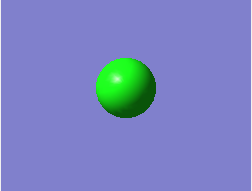
2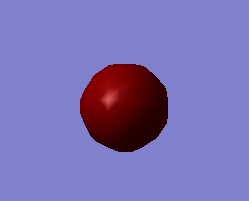
3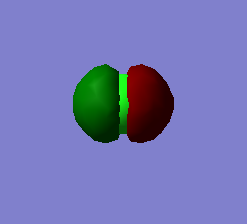
4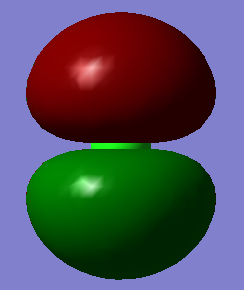
5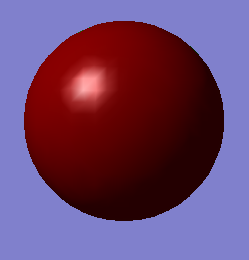
Marking
Note: All grades and comments are provisional and subjecct to change until your grades are officially returned via blackboard. Please do not contact anyone about anything to do with the marking of this lab until you have recieved your grade from blackboard.
Wiki structure and presentation 0.5/1
Is your wiki page clear and easy to follow, with consistent formatting? Do you effectively use tables, figures and subheadings to communicate your work?
Your wiki is consistently formatted and you occasionally used tables to structure it. All your jmols are labelled as 'test molecule'. This should be more informative. You have not used subsections very efficiently to make the structure of you wiki clearer but used bold titles instead.
NH3 0.5/1
Have you completed the calculation and given a link to the file?
YES
Have you included summary and item tables in your wiki?
YES
Have you included a 3d jmol file or an image of the finished structure?
YES
Have you included the bond lengths and angles asked for?
YES
Have you included the “display vibrations” table?
YES
Have you added a table to your wiki listing the wavenumber and intensity of each vibration?
YES
Did you do the optional extra of adding images of the vibrations?
NO
Have you included answers to the questions about vibrations and charges in the lab script?
YES, however you stated to expect 4 bands in the experimental spectrum. You correctly stated that there are two sets of degenerate modes - this explains a spectrum with 4 peaks. However there are only 2 peaks visible as peaks 4, 5 and 6 are of too low an intensity to be visible and you have not commented on the intensities at all.
You could have included an electronegativity argument to explain the calculated charges on the atoms. Additionally, the unit of D (Debye) is not used for charges rather than for dipole moments!
N2 and H2 0/0.5
Have you completed the calculations and included all relevant information? (summary, item table, structural information, jmol image, vibrations and charges)
YES - however you stated a bond angle for H2 and for N2. To create a bond angle a minimum of 3 atoms is needed.
Crystal structure comparison 0/0.5
Have you included a link to a structure from the CCDC that includes a coordinated N2 or H2 molecule?
NO - instead you included a .xyz file. This was a nice additional info but you have not included a link to the CCDC. Therefore, we cannot check the source of the given data. Appropriate referencing is important!
Have you compared your optimised bond distance to the crystal structure bond distance?
YES
Haber-Bosch reaction energy calculation 1/1
Have you correctly calculated the energies asked for? ΔE=2*E(NH3)-[E(N2)+3*E(H2)]
YES
Have you reported your answers to the correct number of decimal places?
YES
Do your energies have the correct +/- sign?
YES
Have you answered the question, Identify which is more stable the gaseous reactants or the ammonia product?
YES
Your choice of small molecule 2/5
Have you completed the calculation and included all relevant information?
YES
Have you added information about MOs and charges on atoms?
You could have discussed the calculated vibrations. (How many modes you expected, what is about the intensity...) You could have explained the charges using an electronegativity argument. You should have reoriented the molecule before taking snapshots in that way it is possible to see what is going on between the two atoms. MO1: There is no overlap at all, so this is a nonbonding MO. MO2: For the 2s Mos there still is no overlap. this is a nonbonding MO as well. MO3: This MO is not composed of 1s orbitals. It can be constructed by 2p orbitals and is nonbonding as well. MO4: Your statement is correct. But you missed to mention it is composed of the 3p orbitals of Cl. MO5: Any statement despite the correct assignment as the LUMO is missing.
Independence 0/1
If you have finished everything else and have spare time in the lab you could: Check one of your results against the literature, or Do an extra calculation on another small molecule, or Do some deeper analysis on your results so far
NO - no independent work was identified
